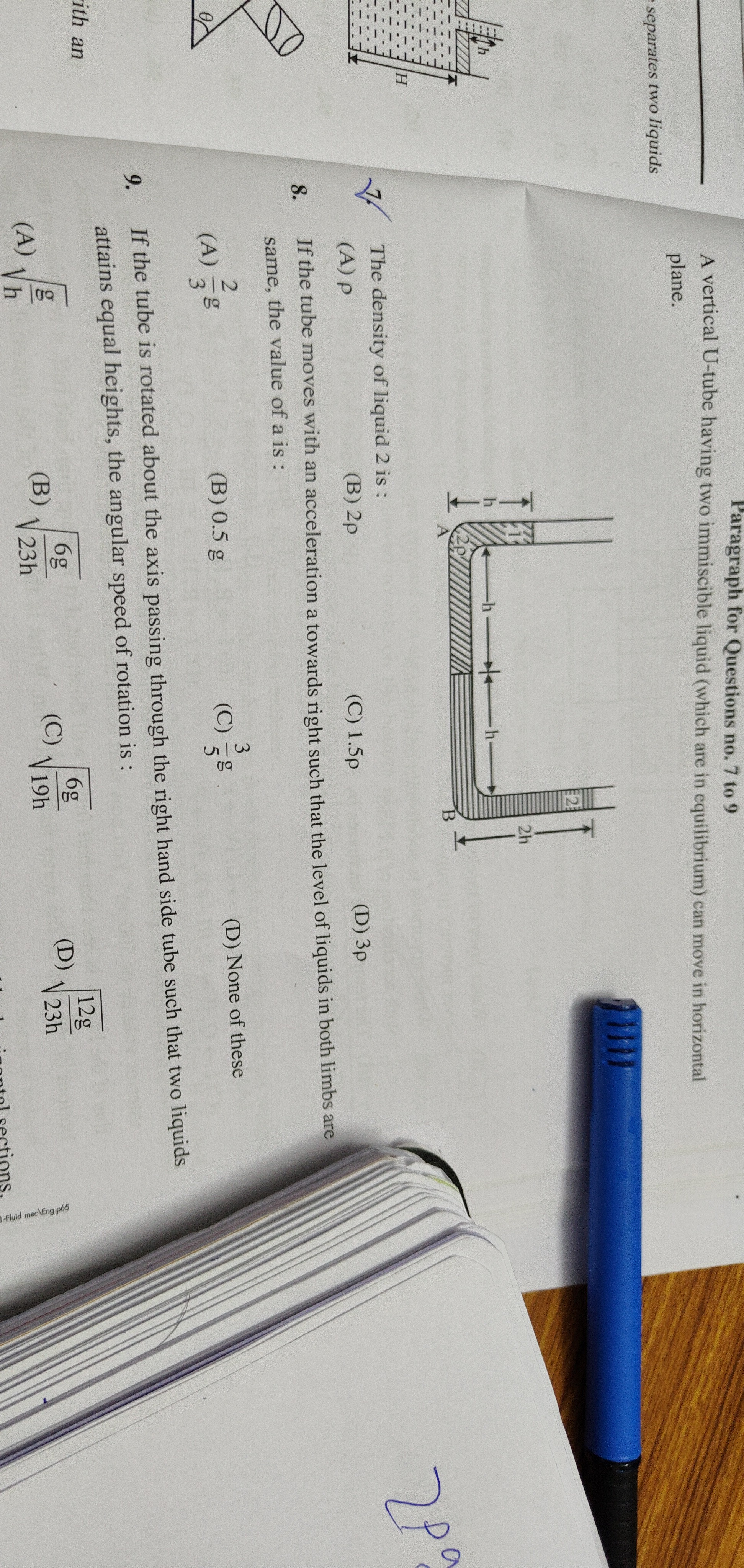Question
Question: A vertical U-tube having two immiscible liquid (which are in equilibrium) can move in horizontal pla...
A vertical U-tube having two immiscible liquid (which are in equilibrium) can move in horizontal plane.
-
The density of liquid 2 is: (A) ρ (B) 2ρ (C) 1.5p (D) 3p
-
If the tube moves with an acceleration a towards right such that the level of liquids in both limbs are same, the value of a is : (A) 32g (B) 0.5 g (C) 53g (D) None of these
-
If the tube is rotated about the axis passing through the right hand side tube such that two liquids attains equal heights, the angular speed of rotation is : (A) hg (B) 23h6g (C) 19h6g (D) 23h12g

ρ
2ρ
1.5p
3p
The provided solution does not contain the correct answer for question 7.
Solution
The provided solution for question 7 is incomplete and does not lead to a definitive answer from the given options. It repeatedly reaches the conclusion that ρ=ρ2, which contradicts the options. A correct approach would involve considering the pressure at the interface. If we assume the diagram implies that the vertical height of liquid 1 is h and the horizontal length is h, and for liquid 2, the vertical height is h and the horizontal length is 2h, then the pressure at the interface in the left limb is Patm+ρgh. In the right limb, the pressure at the interface would be Patm+ρ2gh. For equilibrium, these must be equal, leading to ρ=ρ2. However, if we interpret the diagram such that the total length of liquid 1 from the free surface to the interface is h and the horizontal part is also filled with liquid 1 of length h, and for liquid 2, the vertical height is h and the horizontal part is filled with liquid 2 of length 2h, then the pressure at the interface in the left limb is Patm+ρg(h+h)=Patm+2ρgh. In the right limb, the pressure at the interface is Patm+ρ2g(h+2h)=Patm+3ρ2gh. Equating these gives 2ρgh=3ρ2gh, so ρ2=32ρ. This also does not match the options. Without a clear interpretation of the diagram or additional information, question 7 cannot be definitively answered from the given options.
